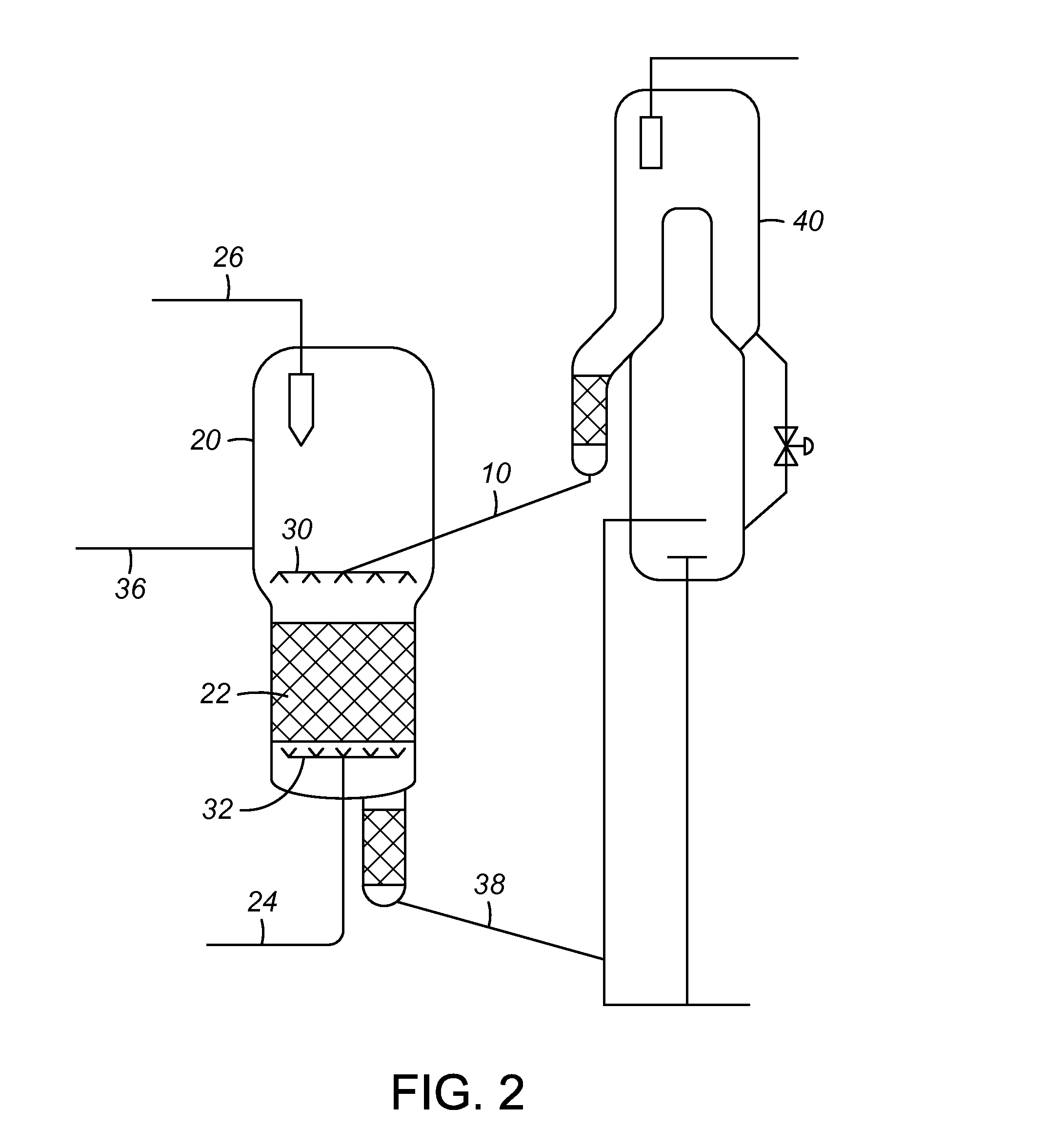Counter-Current Fluidized Bed Reactor for the Dehydrogenation of Olefins
a fluidized bed reactor and counter-current technology, applied in the direction of hydrocarbon oil treatment products, organic chemistry, chemistry apparatus and processes, etc., can solve the problems of increasing the overall yield of products, complex combination of reaction and gas recovery systems in the light olefin plant, and high equipment costs
- Summary
- Abstract
- Description
- Claims
- Application Information
AI Technical Summary
Benefits of technology
Problems solved by technology
Method used
Image
Examples
Embodiment Construction
[0014]Currently, the production of light olefins is primarily from the normal sources of light olefins that are produced through the cracking process of naphtha and heavier hydrocarbons, and through the process of cracking heavier olefins. Light olefins are subsequently separated out from a product stream comprising ethylene and propylene. There is a growing gap between the production of light olefins and the demand for these polymer building blocks. The demand is being met through dedicated processes that use light paraffinic feedstocks, and directly convert the paraffins to olefins through dehydrogenation. One example of a preferred feedstock is propane or an LPG feed. This can be directly dehydrogenated and overcomes drawbacks of other methods of propylene production, such as methanol to olefins and the cracking of heavier hydrocarbons.
[0015]The production of light olefins using a process for the direct conversion of a paraffin feedstream to the olefin analog utilizes a noble met...
PUM
| Property | Measurement | Unit |
|---|---|---|
| temperature | aaaaa | aaaaa |
| temperature | aaaaa | aaaaa |
| temperature | aaaaa | aaaaa |
Abstract
Description
Claims
Application Information
 Login to View More
Login to View More - R&D
- Intellectual Property
- Life Sciences
- Materials
- Tech Scout
- Unparalleled Data Quality
- Higher Quality Content
- 60% Fewer Hallucinations
Browse by: Latest US Patents, China's latest patents, Technical Efficacy Thesaurus, Application Domain, Technology Topic, Popular Technical Reports.
© 2025 PatSnap. All rights reserved.Legal|Privacy policy|Modern Slavery Act Transparency Statement|Sitemap|About US| Contact US: help@patsnap.com



